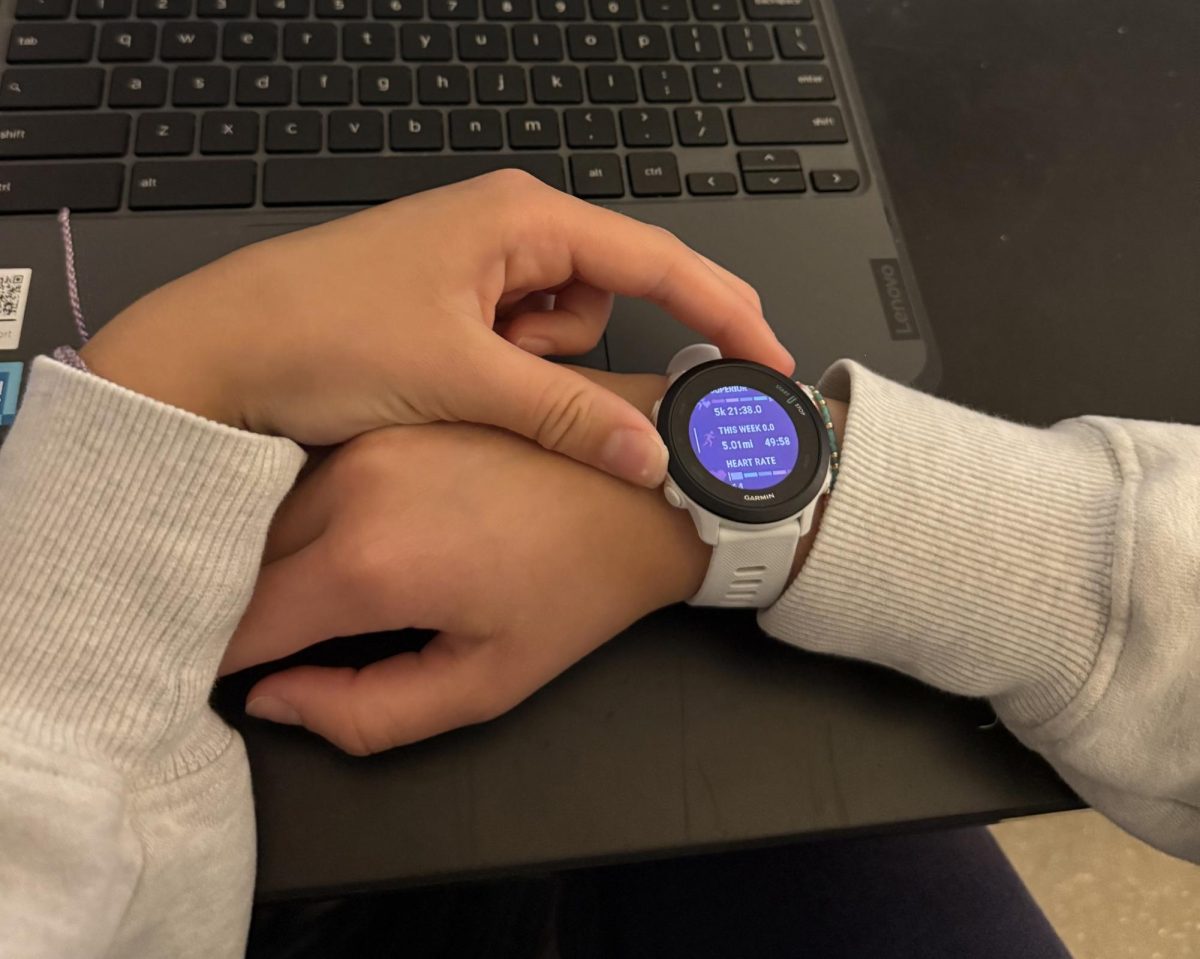Click. My mom snaps a picture of me dressed up on vacation. As I look back at the picture, my eyes immediately draw to the chunky band and bright screen decorating my wrist.
The invention of the smartwatch began in the early 1980s. According to an Intex Technologies’ blog, the first smartwatches, Pulsar NL C01 and Seiko RC-1000, stored data and were synchronized with computers. Over time, smartwatches evolved into wrist-worn computers. The 2010s experienced a growth in popularity with the first smartphone-connected watches such as the Pebble and Apple Watch.
Brands that dominate the technology industry such as Apple and Samsung have had immense success with the launching of their smartwatches, but the creation of new companies such as Fitbit and Garmin have risen to the same level of love and popularity.
My journey with a smartwatch began in 2023 with a classic Apple watch. I didn’t have a reason to get one, but they looked cool, and what seventh grader turns down a way to text during class without her phone? After a few months of wearing it every day, I was hooked. I was able to communicate from the watch, track health statistics and use apps from my phone on the small, square screen.
I’ve used my Apple watch to track my fitness, running and workouts. Through using the heart rate, distance and duration features, I have gotten more interested in my health. After frequent usage, I noticed my watch was not tracking accurately and the battery life had grown worse, only lasting nine hours before dying.
After dealing with the inaccuracy and battery drain for months, I invested in a new watch, the Garmin Forerunner 55. After having the Garmin for a month now, I am obsessed with it. Compared to the Apple watch, the Garmin’s battery life lasts for up to 10 days, has GPS to get the most accurate distance tracking and has much better input on my health. It tracks and gives input on my sleep, heart rate variability, stress, workouts, rest and blood pressure. The watch displays all of this information, but the Garmin Connect app on my phone provides even more, broken-down input on my activity such as workouts and stress level, and health stats such as calories lost and average resting heart rate.
With the buzz of my wrist, I haven’t missed an important text or call since. Though I prefer the Garmin over Apple, on Apple’s watch I was able to answer texts and calls, a feature my Garmin cannot.
Regardless of smartwatch preferences, they go way farther than being an accessory. As cliche as it sounds, my watch has made me care far more about my health, through encouraging me to workout, and helping me to stay organized. “I think [my watch is] beneficial when I’m working out so I can track the workouts that I do,” science teacher and runner Miranda Custer said.
The younger you are, there is less of a need for a smartwatch. As someone gets older though, smartwatches are greatly beneficial to a healthy and productive lifestyle.






![The 2025-2026 Editorial Board Alex Grainger, Cameron Cowen, Helen Manolis, Emory Scofield, Ahmed Ibrahim, Rebekah Buchman, Marley Hoffman, Hayley Gottesman, Pragna Pothakamuri and Natalie Pak (Chase Dolan not pictured) respond to the new MCPS grading policy. “When something that used to be easy suddenly becomes harder, it can turn [students’] mindset negative, whereas making something easier usually has a better impact. I think that’s where a lot of the pushback comes from. But if you put emotions aside, I do think this change could help build stronger work ethic,” Ibrahim said.](https://woottoncommonsense.com/wp-content/uploads/2025/09/fqr5bskTXpn0LRQMmKErLuNKdQYBlL726cFXBaWF-1200x900.jpg)


